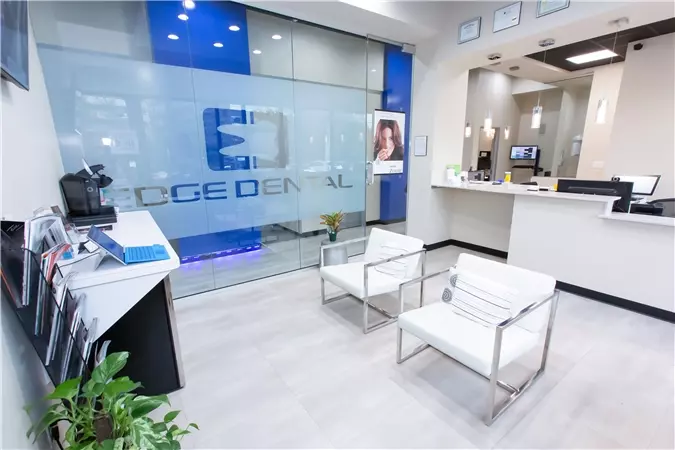Can a Dentist Fit Me for a Custom Mandibular Advancement Device?

A mandibular advancement device (MAD) is an oral appliance designed to treat sleep apnea and snoring. It works by slightly shifting the lower jaw (mandible) forward during sleep. This forward positioning keeps the airway open, reducing the risk of obstruction that causes snoring and sleep apnea episodes.
Unlike over-the-counter devices, a custom MAD is tailored specifically to your mouth structure, offering greater comfort and effectiveness. These custom devices must be fitted by a qualified dental professional, typically a mandibular advancement device dentist, who understands both dental anatomy and airway health.
Sleep apnea is more than just snoring—it’s a potentially dangerous condition that can increase the risk of heart disease, high blood pressure, and chronic fatigue. If you’re seeking non-invasive, long-term relief from obstructive sleep apnea (OSA), a custom MAD from an experienced dentist may be the ideal solution.
Can Any Dentist Provide a Mandibular Advancement Device?
Not all general dentists are trained or equipped to provide MADs. To get a proper, effective fit, you’ll need a mandibular advancement device dentist—a professional who specializes in dental sleep medicine. These dentists undergo specific training to understand the relationship between oral anatomy and sleep disorders. They also work closely with sleep specialists who provide diagnoses and recommend treatment options.
Once your sleep apnea is diagnosed (usually through a sleep study), the next step is a consultation with a qualified MAD provider. During the visit, the dentist will examine your teeth, jaw alignment, and airway structure to determine if a mandibular advancement device is the right choice for you.
How Does a Dentist Fit You for a Custom Mandibular Advancement Device?
The fitting process for a custom MAD typically involves the following steps:
- Initial Consultation: The mandibular advancement device dentist evaluates your dental health, reviews your sleep study results, and confirms your candidacy for the device.
- Digital or Traditional Impressions: To create a custom-fit device, the dentist takes impressions of your teeth. Today, many practices use AI dental clinic technology to perform digital scans, offering more accuracy and comfort compared to traditional molds.
- Bite Registration: This step involves measuring how far your lower jaw should be advanced to optimize airflow without causing discomfort. This is a delicate balance and is best handled by an experienced professional.
- Device Fabrication: Your impressions and measurements are sent to a dental lab that specializes in MADs. The device is typically ready within 2–3 weeks.
- Fitting and Adjustment: Once the device arrives, your dentist ensures it fits properly and makes necessary adjustments for comfort and function. You may need follow-up visits to fine-tune the device.
- Monitoring and Follow-Up: You’ll return to the mandibular advancement device dentist periodically to ensure the device continues to work effectively and doesn’t cause bite or jaw issues over time.
Why Choose a Mandibular Advancement Device Over a CPAP?
While CPAP (Continuous Positive Airway Pressure) is the gold standard for treating moderate to severe sleep apnea, it’s not always well-tolerated. Many patients find the mask uncomfortable, noisy, or difficult to manage. That’s where MADs come in as a practical alternative.
Here’s why many patients prefer MADs:
- Portability: Easy to carry during travel.
- Quiet: No noise like CPAP machines.
- Comfort: Especially when custom-fitted by a skilled mandibular advancement device dentist.
- Compliance: Patients are more likely to use it consistently.
For individuals with mild to moderate OSA—or those who can’t tolerate CPAP—a MAD can significantly improve sleep quality and reduce health risks.
How Does AI Enhance the Experience at a Dental Clinic?
Modern AI dental clinic use advanced technology to streamline diagnostics, improve patient outcomes, and enhance overall comfort. Here are a few ways AI supports MAD treatment:
- 3D Digital Impressions: AI-driven scanners capture accurate models of your teeth and jaw for precise device fabrication.
- Bite Analysis: AI tools can simulate jaw movements and help determine the best mandibular position.
- Treatment Planning: AI can analyze sleep data alongside dental scans to assist the mandibular advancement device dentist in customizing the device for optimal performance.
- Remote Monitoring: Some AI-enabled MADs now include sensors to track use and effectiveness, sending data directly to your dentist for review.
By choosing an AI dental clinic, you’re benefiting from the most accurate, cutting-edge technology available, ensuring your MAD fits perfectly and functions effectively.
Is a Custom Mandibular Advancement Device Worth the Investment?
A custom-fitted MAD costs more than a generic or over-the-counter device, but the benefits are significant:
- Improved Sleep Quality: Wake up refreshed with fewer interruptions.
- Health Benefits: Reduce the risk of cardiovascular problems, diabetes, and stroke.
- Comfort: Custom devices fit snugly and cause less jaw discomfort or gum irritation.
- Durability: High-quality materials ensure the device lasts longer with proper care.
When fitted by a trained mandibular advancement device dentist, your MAD becomes a personalized tool for better health, sleep, and daily energy. Considering the long-term health risks of untreated sleep apnea, a properly fitted MAD is a worthwhile investment.
How Can You Find the Right Mandibular Advancement Device Dentist?
If you’re considering a MAD, search for a dentist with experience in dental sleep medicine. Use phrases like “mandibular advancement device dentist near me” when looking online. Verify that the provider has the right certifications and technology, such as access to an AI dental clinic for precision diagnostics.
Before scheduling your consultation, ask the following questions:
- Do you have experience treating sleep apnea with MADs?
- Do you use digital impressions or AI tools for fitting?
- How do you monitor treatment effectiveness?
- What follow-up care do you provide?
A good mandibular advancement device dentist will guide you through each step and ensure your treatment plan is tailored to your unique needs.
Conclusion: Should You Visit a Dentist for a Mandibular Advancement Device?
Yes, visiting a qualified mandibular advancement device dentist is the best way to get a custom-fitted device that treats your sleep apnea safely and effectively. With advanced tools now available in many AI dental clinics, the fitting process has become more accurate and patient-friendly than ever before.
If you’re tired of poor sleep, constant fatigue, or struggling with a CPAP, now is the time to explore a mandibular advancement device. Find a trusted local dentist with expertise in sleep-related dental care, and take the first step toward better sleep and better health today.



